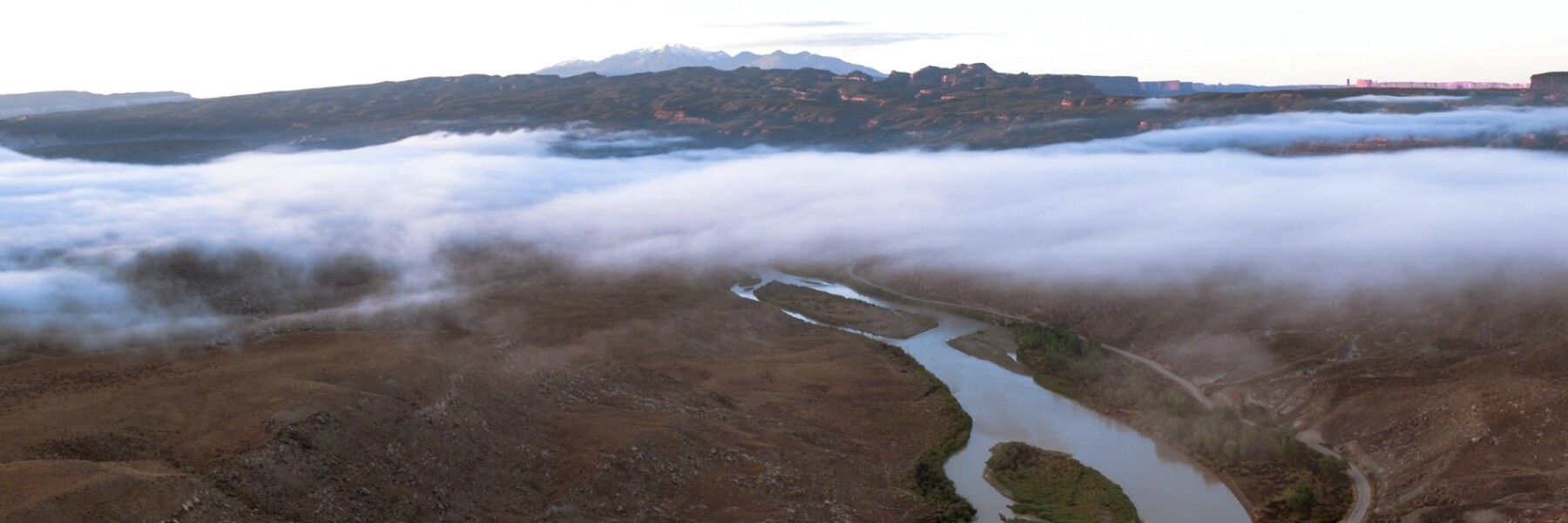The Colorado River is the hardest-working river in the Southwest and an economic engine for the entire country.
But it is also a river facing a critical inflection point. Every drop of water that flows down the Colorado is already accounted for and due to a variety of factors — including a growing population and a changing climate — its flows are projected to decline over the next several decades.
These challenges exacerbate the fundamental problem facing the river: Demands on water outstrip supply.
Early forecasts for 2018 are already underscoring these challenges. Due to lower than average snowfall in the Rocky Mountains, the Colorado Basin River Forecast Center this month predicted that spring runoff into Lake Powell, the reservoir that supports the river’s Upper Basin, will be at a 47 percent of average.
The 2018 precipitation and runoff levels are threatening impacts that will reverberate across the western United States. The amount of water flowing into Lake Powell partially determines the amount of water to be released into Lake Mead, the Lower Basin reservoir that provides water to Arizona, Nevada and California.
Lake Mead’s elevation has been hovering at around 1,075 feet, the level at which the federal government imposes shortages on the Lower Basin states, for the last several years. However, with 2018 looking more and more likely to be drier and warmer than average, there is an increased likelihood of declared shortages in the Lower Basin in 2019.
The forecast is a sobering reminder that we need to take further action to secure the long-term future of the Colorado River Basin and the economies and environments that depend on it.
There’s still time for more snow to fall in the winter season, but it would take a significant uptick in precipitation levels to even reach average levels. We simply cannot rely on weather fluctuations to solve a problem that requires more fundamental, long-term solutions, including increased water conservation, flexible water management and better protection of healthy rivers and streams.
It is critical we act now to ensure the Colorado River Basin has the water supply needed to sustain the West’s growing population. Just think about the consequences of inaction — and the potential damage done. The river supports 16 million American jobs, generates $1.4 trillion in economic benefits annually, irrigates nearly 6 million acres of farmland, and supplies drinking water to about 40 million people.
Because the economic and environmental stakes are so high, we must enter a new phase of collaboration, innovation and flexibility when it comes to how we use and manage our water resources in the Colorado River Basin.
The good news is that throughout the basin, policymakers and water suppliers are rallying to address the escalating water-supply crisis through a series of water management strategies, system conservation programs and drought-contingency plans.
Negotiations on these actions are already occurring among the basin states, U.S. federal agencies and Mexico. These droughtcontingency plans are critical components needed to secure the future of the Colorado River, taking a proactive approach to ensuring that conservation will continue in the basin.
They also demonstrate that water users can develop innovative mechanisms to efficiently manage water supplies.
In Arizona, for example, lawmakers and water users are actively working to identify ways to cut back water use now in order to secure supplies over the long term. Arizona’s drought-contingency planning includes solutions that protect groundwater resources in the state, increases water management flexibility — and does not come at the cost of existing healthy river systems.
It is imperative that this plan, and others, are finalized and implemented in 2018.
The decisions we make in 2018 can protect future generations and revitalize the health of the Colorado River. At the Walton Family Foundation, we know it’s possible to implement these solutions. Moreover, we’re committed to supporting decisions to improve water management within the Colorado River Basin.
We must do more than address immediate challenges and mitigate the damage done during a dry winter. Investing in longer-term solutions and strategies will solidify programs and agreements that sustain the health of the Colorado River, and safeguard the livelihoods of millions of Americans for future generations.
This article originally appeared in the Arizona Daily Star.





